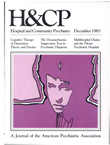Psychoeducational Courses for a Nonpatient Clientele at a Mental Health Center
Abstract
The current data suggest that psychoeducational course offerings can significantly broaden a community mental health center's clientele and service impact. The phenomenon would appear to be partially attributable to the different demand characteristics inhenent in the student as opposed to patient role. In this sense, psychoeducational courses are couched in the idiom of competence and self-fulfillment rather than illness or pathology and thus may facilitate the entry of clients who might otherwise be reluctant to seek services (8). The relatively short-term, time-limited involvement demanded by enrollment in such courses would also appear to play an important role in enhancing positive attitudes toward entry among clients (9).
Given the loss of federal seed money and current cutbacks in local, state, and county funding for serving socioeconomically disadvantaged clients, many community mental health centers are facing a critical need to make more cost-effective use of staff resources, to broaden their clientele, and to diversify their sources of revenue to remain in operation (10). It would appear that psychoeducational programs can help meet these needs by providing services to a relatively neglected, less generally disturbed, yet clinically legitimate category of consumers in a way that is cost-effective for both client and agency.
The average class enrollment of 17 clients per group leaden/therapist at HCMHC represented approximately a twofold increase in the cost-efficiency of service delivery when compared with an average caseload of eight patients per therapist in standard group therapy. Despite the difference in format, it has been HCMHC's experience that similar fees ($10 to $12 per session) can be reasonably charged for both types of service. We conclude that psychoeducational course offerings can provide a valuable adjunctive mode of service delivery in a community mental health center.
Access content
To read the fulltext, please use one of the options below to sign in or purchase access.- Personal login
- Institutional Login
- Sign in via OpenAthens
- Register for access
-
Please login/register if you wish to pair your device and check access availability.
Not a subscriber?
PsychiatryOnline subscription options offer access to the DSM-5 library, books, journals, CME, and patient resources. This all-in-one virtual library provides psychiatrists and mental health professionals with key resources for diagnosis, treatment, research, and professional development.
Need more help? PsychiatryOnline Customer Service may be reached by emailing [email protected] or by calling 800-368-5777 (in the U.S.) or 703-907-7322 (outside the U.S.).



